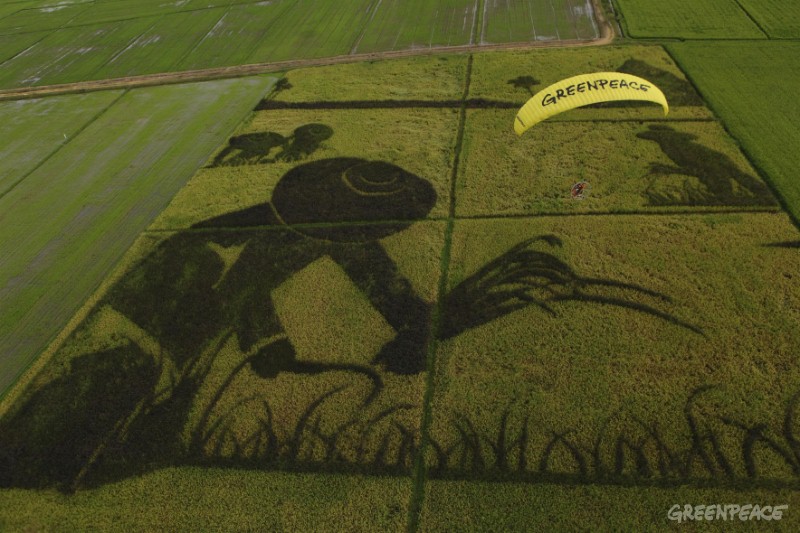
‘Golden’ rice has been in development for almost 20 years and has still not made any impact on the prevalence of VAD. Not only has it failed to have any impact on VAD while using money and resources that could have been given to real solutions, it is also environmentally irresponsible. Genetically Engineered (GE) crops have contaminated, and will continue to contaminate neighbouring crops wherever they are released.
“Releasing GE rice in Asia could irreversibly affect traditional rice varieties and wild ancestors of rice, decreasing our ability to use these valuable genetic resources in the future. It will also impact rice culture” said Dr. Janet Cotter, Senior Scientist at Greenpeace Research Laboratories.
Vitamin A uptake in the body requires more than merely the presence of pro-vitamin A compounds (present in ‘golden’ rice) in the diet – fat, for example, is required to convert pro-vitamin A to vitamin A which the body can use.
In contrast to ‘golden’ rice, other methods have already been used in successful programs to tackle VAD throughout the world. Dietary diversification addresses multiple deficiencies and in the case of home gardens, empowers people to diversify their own diet. Other methods like the fortification of food with vitamins and minerals, food additives and vitamin A supplementation with capsules are effective short and midterm interventions. Despite successes though, VAD is still a serious health problem in many countries. This is due not to the lack of tools for combating the deficiency, but rather to political instability or a lack of funds or political will to act.
“After 20 years and millions of dollars, ‘golden’ rice remains an illusion. Meanwhile, the world has been tackling VAD using safer and more effective techniques. These techniques are proven to be successful and are readily available. ‘Golden’ rice is still a myth, and worse, it carries with it all the environmental and health risks associated with GE crops. Spending even more time and money on ‘golden’ rice development is not only environmentally irresponsible, but also a disservice to humanity.” said Dr. Chito Medina from MASIPAG.
IRRI (the International Rice Research Institute), is leading the development of ‘golden’ rice and hosts the Golden Rice Network. As such they are in a position to influence the future of this GE rice which is, at best, a distraction to solving VAD.
“It is time that IRRI lets go of the illusion that GE is a tool that would benefit farmers and humankind. IRRI should start focusing its attention and resources on tools that would actually work to ensure that rice developers, growers and consumers have access to non-GE rice that is free of corporate control,” said Daniel M. Ocampo, Sustainable Agriculture Campaigner of Greenpeace Southeast Asia.
Greenpeace demands that IRRI stop field trials of ‘golden’ and other GE rice varieties. The Gates Foundation, HarvestPlus, Rockefeller Foundation and other organisations and countries that are funding the development of ‘golden’ and other GE rice varieties should shift their resources to boost current efforts that are tackling VAD and empowering people afflicted by the deficiency.


